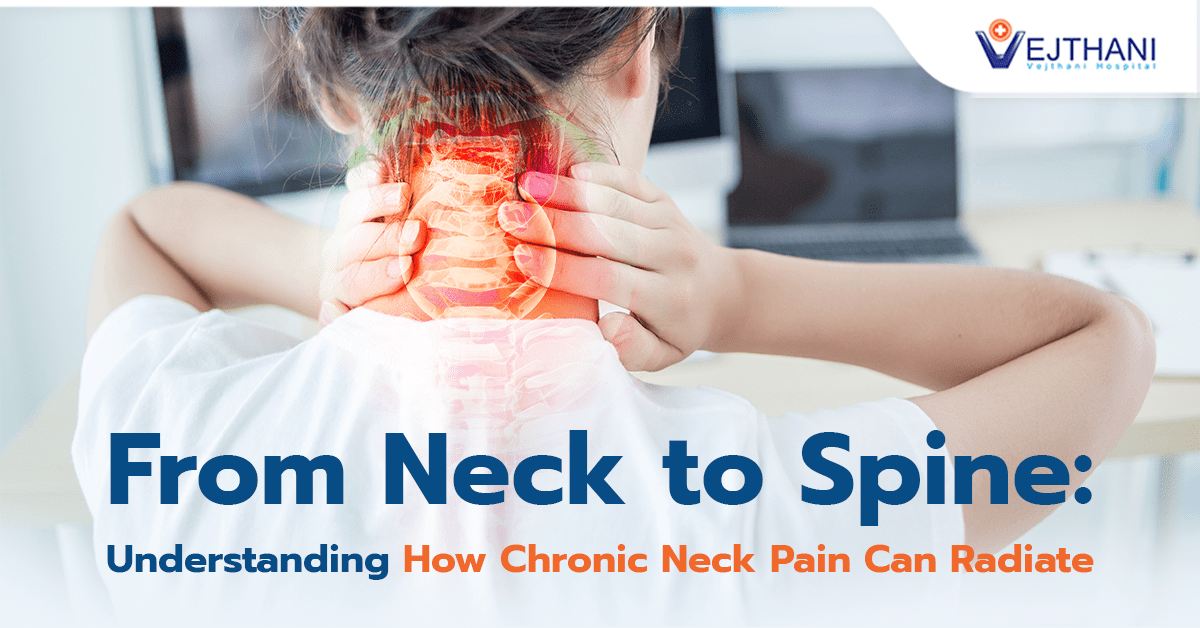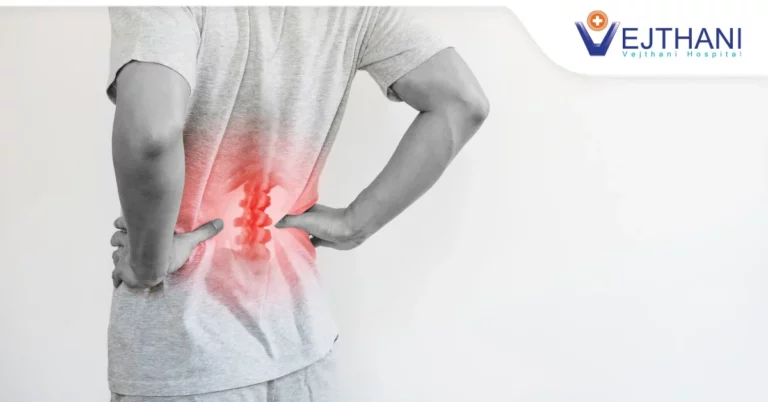Chronic neck pain is a root cause of spinal nerve compression, which poses the risk of muscle weakness, paresis, and paralysis.
Chronic neck pain can significantly impact the quality of life, affecting various aspects such as work, sports, and daily activities. Persistent neck pain often arises from repetitive motions or prolonged incorrect postures, eventually resulting in a condition known as “office syndrome.” Office syndrome causes muscle injuries, tightness, and pain, affecting overall quality of life.
Dr. Ekkaphol Larpumnuayphol, a spine surgeon at Vejthani Hospital, revealed that leaving chronic neck pain untreated over time without making lifestyle adjustments or seeking treatment could potentially elevate the risk of developing more severe diseases, such as muscle weakness, paresis, paralysis, and spine-related illnesses that may include scoliosis, spinal disc degeneration, and herniated spinal discs.
“People with neck or muscle pain or pain in other parts of the body tend to go for a massage for muscle relaxation. While this can provide temporary relief, especially for those with muscle weakness or inflammation, it may not address the root cause, particularly for patients with spinal deformities. Moreover, an improper massage technique can worsen existing symptoms. Hence, if you’ve been suffering from persistent pain, even after 12 weeks of pain relievers or anti-inflammatory medications and a reduction in muscle use, or if you’re encountering additional symptoms such as pain radiating to the arms, having numbness or weakness in the arms, it’s crucial to consult a medical specialist promptly for an accurate diagnosis and receive a proper treatment plan. Because there is a possible risk of a spine-related disease, rather than just office syndrome,” said Dr. Ekkaphol Larpumnuayphol.
A combination of medications, physiotherapy, and lifestyle adjustments like modifying sitting posture at work could treat patients diagnosed with office syndrome. However, for spondylosis or spinal disc herniation, the initial treatment approach typically involves medication and physiotherapy. Remarkably, 60 to 70 percent of patients experience improvements or complete recovery from their condition.
Nevertheless, surgical intervention may become necessary for individuals facing severe spinal nerve compression leading to nerve abnormalities, such as difficulties in walking, maintaining
balance, or having weakness in the arms and legs. Modern surgical techniques use microscopes, enabling surgeons to make small incisions without opening up, reducing post-surgery pain and a lower risk of nerve injury. Notably, patients can achieve faster recovery, often requiring only 1-2 nights of post-surgery hospitalization before returning to a normal, or nearly normal, lifestyle.
When bones weaken or sustain injuries, the spine exerts extra effort, leading to faster degeneration. Dr. Ekkaphol advises against prolonged static positions and encourages changing positions every 30 to 60 minutes. This regular movement and muscle stretching can be facilitated by opting for a chair with a backrest and headrest, as these features alleviate muscle tension. Incorporating exercises that both stretch and strengthen muscles is highly recommended. These measures aim to promote the maintenance of a healthy spine.
For more information, contact
Spine Center, Vejthani Hospital
Call 02-7340000 or Ext. 5500
English Hotline: (+66)8-522 38888
- Readers Rating
- Rated 4.9 stars
4.9 / 5 ( Reviewers) - Spectacular
- Your Rating




























